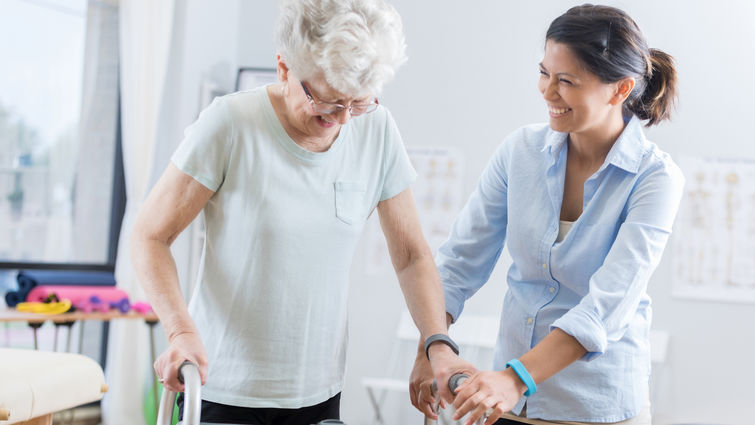
Recovering from a stroke is an ongoing process, lasting much longer than just a patient’s stay in the hospital or at a rehabilitation facility. While the progression to recovery may seem daunting, there are things a patient can do that will make noticeable improvements in overall function and quality of life after a stroke.
Vincent V. Truong, MD, medical director of Loma Linda University Health Comprehensive Stroke Center, provides seven key tips for recovery after a stroke.
- Healing doesn’t happen overnight. Patients will usually see the most change in the first three-to-four months after a stroke with aggressive rehabilitation, but the process doesn’t stop there. In fact, many stroke survivors continue to improve over several years.
- Emotional needs are sometimes as prevalent as physical needs. Suffering from a stroke can cause a range of emotions: anger, fear, frustration, fatigability and depression are only a few of the common responses. According to American Stroke Association, up to 70 percent of post-stroke patients experience fatigability, and one-third of stroke survivors suffer from depression after a stroke. These feelings are natural responses to a stroke. There are treatment options and various support resources to help stroke survivors to deal with these feelings and changes.
- Equip yourself with equipment. A patient’s life will be impacted in many areas — not only within themselves, but in their physical environment as well. Statistics from the National Stroke Association show that 40 percent of all stroke survivors suffer serious falls within a year after having a stroke. Making the home safer by modifying certain aspects to prevent accidents can ensure a higher level of security. Stroke survivors are advised to strengthen muscles and balance through exercise recommended by rehab therapists, minimize the use of medications that can cause drowsiness, and never walk without prescribed assisting devices.
- Exercise, exercise, exercise. Being active can be the difference between dependence and independence for a stroke survivor. It can decrease muscle weakness, improve balance, promote mobility and cognitive recovery, enhance self-confidence and independence, and more importantly, reduce the risk of recurrent stroke.
- Don’t ignore stroke symptoms. About one-fourth of nearly 800,000 strokes per year in the U.S. are recurrent events. Past stroke victims need to watch carefully for symptoms of another stroke: BEFAST. This stands for Balance changes/unstable balance; Eyesight change/blurred vision; Facial droop; Arm/leg weakness; Slurred speech; Time to call 911. Immediate medical actions to stroke symptoms may help prevent or reduce permanent brain damage.
- Lean on support. Stroke survivors and caregivers need to make tremendous adjustment in their lives. Connecting with other survivors and caregivers through stroke support groups can be incredibly beneficial.
- Eat well. In addition to regular exercise and control of stroke risk factors (such as hypertension, diabetes, high cholesterol, smoking tobacco, obesity, etc.), a healthy diet is one of the keys to stroke reduction. The American Stroke Association recommends a diet rich in fruit and vegetables, whole grains, high-fiber, lean protein, low salt and limited saturated and trans-fat.
Recovering after a stroke can be an extensive and challenging experience. Although there are many difficulties along the way, arming yourself with knowledge and support can make it achievable.
